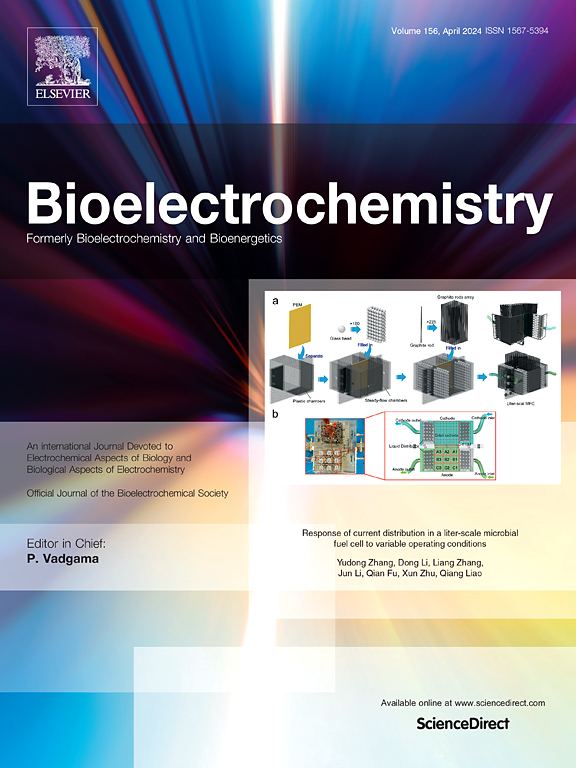希瓦氏菌MR-1优先生长对2205双相不锈钢组成相微生物腐蚀的影响
IF 4.8
2区 化学
Q1 BIOCHEMISTRY & MOLECULAR BIOLOGY
引用次数: 0
摘要
了解2205 DSS组成相(铁素体/奥氏体)表面电活性细菌的选择性生长是减轻微生物影响腐蚀(MIC)的必要条件。在厌氧条件下,利用希瓦氏菌MR-1研究了细菌的优先附着及其对单相腐蚀的影响。单铁素体相比单奥氏体相更容易形成生物膜。原子力显微镜(AFM)观察发现,铁素体相表面覆盖了一层完整的奥氏体链球菌MR-1生物膜,而奥氏体相表面仅观察到少量的奥氏体链球菌MR-1细胞。培养14 d后,2205 DSS、铁素体和奥氏体相的最大生物膜厚度分别为15.5±1.0µm、13.8±3.2µm和10.2±0.8µm。S. oneidensis MR-1加速了材料的点蚀。无菌培养基中单个铁素体和奥氏体相的最大凹坑深度(3.2µm vs 2.2µm,平均值为2.5µm vs 1.7µm)相对小于生物培养基(6.0µm vs 4.5µm,平均值为4.5µm vs 3.8µm)。Cr和Ni的协同作用增强了钝化膜在奥氏体相上的稳定性。本文章由计算机程序翻译,如有差异,请以英文原文为准。

Effect of preferential growth of Shewanella oneidensis MR-1 on microbial corrosion of constituent phases of 2205 duplex stainless steel
Understanding selective growth of electroactive bacteria on surface of constituent phases (ferrite/ austenite) of 2205 DSS is required for mitigating microbiologically influenced corrosion (MIC). In this study, the preferential attachment of bacteria and its impact on corrosion of single phase were investigated under anaerobic condition using Shewanella oneidensis MR-1. Single-ferrite phase was more susceptible to biofilm formation compared with single-austenite phase. Atomic force microscope (AFM) revealed that the surface of ferrite phase coupon was fully covered with S. oneidensis MR-1 biofilm whereas few S. oneidensis MR-1 cells were observed on the surface of austenite phase. After 14 d of incubation, the maximum biofilm thicknesses on 2205 DSS, ferrite and austenite phase were 15.5 ± 1.0 µm, 13.8 ± 3.2 µm, and 10.2 ± 0.8 µm, respectively. S. oneidensis MR-1 accelerated the pitting corrosion of materials. The maximum pits depth on single ferrite and austenite phase in sterile medium (3.2 µm vs 2.2 µm with mean values 2.5 µm vs 1.7 µm) were relatively small than those in biotic medium (6.0 µm vs 4.5 µm with mean values 4.5 µm vs 3.8 µm). Synergistic effects of Cr and Ni enhanced the stability of passive film on austenite phase.
求助全文
通过发布文献求助,成功后即可免费获取论文全文。
去求助
来源期刊

Bioelectrochemistry
生物-电化学
CiteScore
9.10
自引率
6.00%
发文量
238
审稿时长
38 days
期刊介绍:
An International Journal Devoted to Electrochemical Aspects of Biology and Biological Aspects of Electrochemistry
Bioelectrochemistry is an international journal devoted to electrochemical principles in biology and biological aspects of electrochemistry. It publishes experimental and theoretical papers dealing with the electrochemical aspects of:
• Electrified interfaces (electric double layers, adsorption, electron transfer, protein electrochemistry, basic principles of biosensors, biosensor interfaces and bio-nanosensor design and construction.
• Electric and magnetic field effects (field-dependent processes, field interactions with molecules, intramolecular field effects, sensory systems for electric and magnetic fields, molecular and cellular mechanisms)
• Bioenergetics and signal transduction (energy conversion, photosynthetic and visual membranes)
• Biomembranes and model membranes (thermodynamics and mechanics, membrane transport, electroporation, fusion and insertion)
• Electrochemical applications in medicine and biotechnology (drug delivery and gene transfer to cells and tissues, iontophoresis, skin electroporation, injury and repair).
• Organization and use of arrays in-vitro and in-vivo, including as part of feedback control.
• Electrochemical interrogation of biofilms as generated by microorganisms and tissue reaction associated with medical implants.
 求助内容:
求助内容: 应助结果提醒方式:
应助结果提醒方式:


